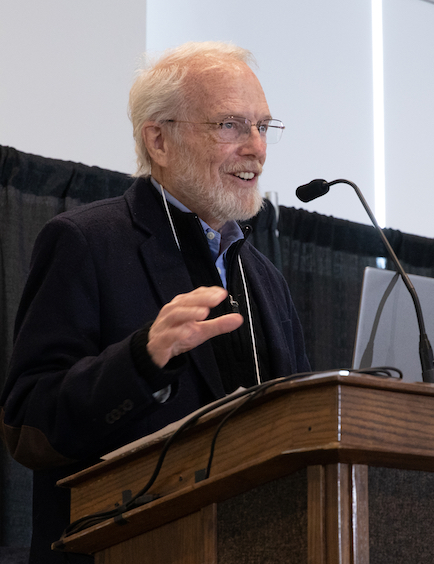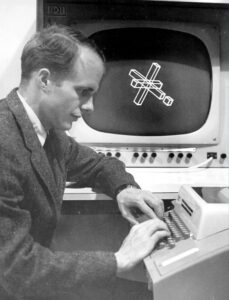
John Warnock, University of Utah alumnus, computer graphics pioneer, and co-founder of Adobe, passed away on August 19, 2023. He was 82 years old.
Warnock’s development of some of the fundamental techniques behind computer-generated images and desktop publishing made him a luminary of the tech world. Over the course of decades-spanning career, he was awarded the prestigious National Medal of Technology and Innovation by President Barack Obama; the Computer Entrepreneur Award from the IEEE Computer Society; the American Electronics Association Medal of Achievement; and the Marconi Prize for contributions to information science and communications.
Beyond this technological legacy, few individuals have had as great a philanthropic impact on the John and Marcia Price College of Engineering. Along with his wife Marva, whom he met on campus in 1965, he provided the naming gift for the Price College’s main facility, the John E. and Marva M. Warnock Engineering Building, as well as support for two Presidential Endowed Chairs and several other campus projects.
“I remember John telling me that, when he was a young man, he really needed the College of Engineering, so when he learned the College of Engineering needed him, he couldn’t say no,” said Richard Brown, the H. E. Thomas Presidential Endowed Dean of the Price College of Engineering. “He has given back in ways that have had a huge impact on thousands of students who came after him.”
Born in the suburbs of Salt Lake City, Warnock received bachelor’s degrees in mathematics and philosophy from the U in 1961. He would go on to earn a master’s degree in mathematics in 1964 and then a doctorate in electrical engineering in 1969.

Warnock’s doctoral thesis, “A hidden surface algorithm for computer generated halftone pictures,” was a foundational contribution to the field of computer graphics. In it, Warnock demonstrated a method for breaking down three-dimensional images into the collection of polygons that would be visible from a given viewpoint. With each polygon simple enough to be digitally rendered on the computers of the time, the “Warnock algorithm” was responsible for the first realistic computer software-generated images.
After a stint with one of the first commercial computer graphics companies, Evans & Sutherland (E&S), founded by his advisor David Evans and Ph.D. committee member Ivan Sutherland, and serving as a principal scientist at Xerox’s Palo Alto Research Center (PARC), Warnock and collaborator Charles Geschke left to found Adobe Systems. John’s work on translating physical images to digital ones, that had its seeds at E&S and had been continued at PARC, had came full-circle at Adobe with the development of PostScript, a computer language used to convert digital images into physical ones by way of a printer. The “Portable Document Format,” or PDF, a descendent of PostScript, provided the ability to render images on the computer instead of in the printer, and became the de facto standard for document exchange. Building upon the success of PDF, Adobe would extend their capabilities into a suite of desktop publishing tools and technologies such as Photoshop, Illustrator, InDesign, and After Effects. Warnock’s fingerprints can be found on nearly every creative pursuit and industry.
Warnock had recently returned to campus to celebrate an IEEE Milestone Award, where he was named one of the “pioneers of computer graphics” for his development of the Warnock algorithm. Speaking at that event, Warnock described the trajectory of an idea that started at the U, took him to E&S and Xerox PARC, and would go on to revolutionize desktop publishing: that printed images should be the product of a computer program that could be run on any printing device.
“I started to think ‘how can you make a description of the printed page?’ and started working on that with the brightest people in the world,” Warnock said. “Xerox didn’t understand it, so we left and started Adobe, and that was a pretty good decision. But I owe it all to the education I got here and the people in this room.”